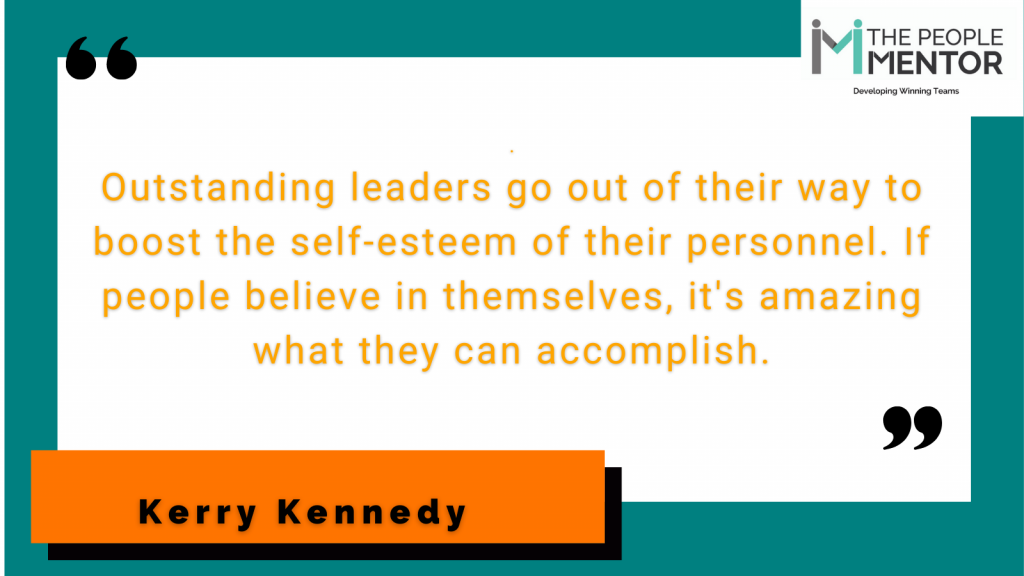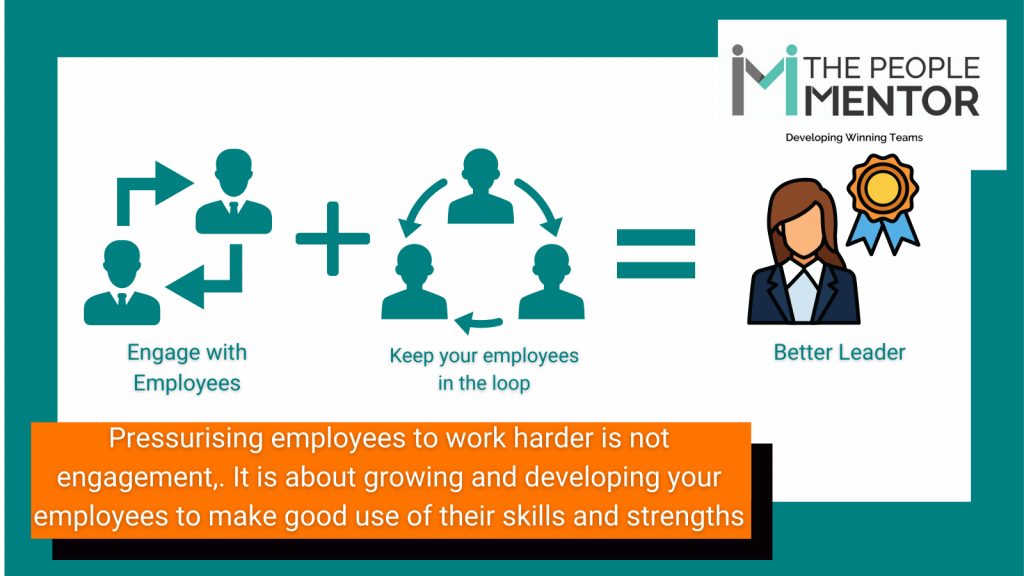That moment when you realise you misjudged the situation, and the team took you the wrong way or the whole thing went wrong.
You feel like hiding away. You just want to go into a deep funk!
This is the very time when you need to seek feedback and reflect on what went well and what could have been better as well.
While in this reflective state, consider how you are doing in these areas.

Set clear Expectations and goals.
There is nothing worse than being unclear what the business or your department is trying to achieve and how. It leaves your employees floundering and unsure which way to turn.
Therefore, paint the business vision to your employees. And keep on repeating it. From experience, if you only discuss it a couple of times in the year it soon fades. Add to the mix showing how their roles fit alongside the vision and you will get a lightbulb go off for them.
Struggling with how to do this –
Use some flip chart on the wall (or on a virtual whiteboard) with a heading for each of the business goals and get them to add what they do that links to it. Once they’ve all added their tasks and responsibilities then make sure you discuss it to embed what has come out.
This will help them understand and as well, whether any overlaps on responsibilities.
And don’t forget to share what personal behaviours you expect. And specific goals.
Engage with your employees.
Pressurising employees to work harder is not engagement, quite the reverse. It is about growing and developing your employees to make good use of their skills and strengths. It is essential to build high-performing teams that are fruitful for not only the business but the individuals too.
The first step is to get to know your team, be visible and engage in discussions.
Don’t shut yourself away!
I used to find walking around the office every day would enable me to pick up on issues bubbling under the surface. Or on people who were struggling. It often shows in their body language.
As the leader it is vital to not stay in your ivory tower!
Another tip is to go and carry out “go and sees” with your teams and departments. It helps for them to see you as a human being and approachable. In turn, it gives them an opportunity to share problems, insights, and improvements.
Remember when doing this to ask open ended questions and show you are actively listening and making notes.
It shows you care enough to find out about them.
I can remember sitting with each of my technical team when I first started leading them. Well, that was an eye opener! It showed there were problems generated through the way work was fed to them. It also demonstrated there were issues around the development of the team feeding through the work. Importantly it made the individuals feel listened to.
Encourage debates and discussions. Involving your employees through asking for their thoughts makes a huge difference. It soon backfires if you don’t.
I recall an occasion when managers drew up a template for the team to use. What they didn’t do was run it through the teams for their input despite a suggestion to that effect. Uproar ensured!
And more to the point it wasn’t completed correctly! I am sure if they had been involved it would have been fit for purpose and the teams would have completed fully.
On that note, people need to be open and honest. Don’t act defensively (yes it can be hard not to) and don’t criticise or hold it against them. You need an open and honest culture for teams to be successful.

Keep your employees in the circle.
In any business you often hear gripes about communication.
Look at what you are sharing. Do you share the latest developments and progress?
What about the meetings you and your managers attend?
I’d hear employees frequently complaining about their leaders being in meetings which all seemed a waste of time. Make sure you share what the outcomes were from the meetings. It doesn’t need to be war and peace though!
Also don’t be frightened of sharing any bad news as you will see employees go the extra mile to bottom out issues, create cost savings and more when they know why.
Also think about the communication methods. You are your employees all have different ways of absorbing information.
Build Trust with your employees.
This leads on from communication as it plays an important part.
Building trust takes time. And let’s face it some people trust easily and some take time. It is about leading by example and doing what you say you are going to do. Nothing is worse than having a leader who promises something, and it then never materialises.
What also counts is ethics and professional behaviour. Whatever you do, be above board.
And as my mum always said, “treat others as you would like to be treated.” So, remember to show respect and fairness.

Understand your leadership style!
It is so easy to get stuck in one style that you always use. However sometimes that can alienate people if used in the wrong situation.
A good leader will assess the situation and demands and then flex their style.
In an emergency or crisis, a task-based approach often works best – so autocratic, controlling, or transactional. This is directional and will get actions completed quickly which is often needed.
When you are in an unclear or less-structured position then you need the group to work closely together. Using a democratic type of style will get better results and will help with building the group.
Bringing in change usually needs a transformational leadership style. This tends to work well as it involves painting the vision and driving people to change.
Leadership Qualities
Have you ever looked at what the qualities of a successful leader are?
They usually have
Enthusiasm and determination – their passion shows through and others catch on to it. They want to make things happen to make things better and improved.
Confidence – they believe in themselves and what they want to achieve. And they believe in their teams. Yet it never flows over into arrogance.
Resilience – they are fully aware there will be ups and downs and they use these times to learn from and dust themselves down. The leader moves forward even when things go wrong but they schedule in reflection time first.
Integrity and honesty – they are true to their values and will have sound beliefs. Their ethics are clear. They believe in be honest which helps to build trust.
Empathy and warmth – they care and are interested in those around them and their employees. They seek to understand and be non-judgemental.
No ego – they realise it is not about them but the people they lead. They are willing to listen. And they will admit when they have got it wrong and say sorry.
Ask yourself, do you demonstrate all of these or do you need to do some work on these?
Few of us start with getting it right straight away. It takes life’s journey, experience and developing to be a successful leader.
One of the things I found helped me was getting a mentor. It gives you time to reflect and explore in a safe place. It means no-one is judging you and are simply to help you discover options and different ways of doing things.
Struggling to justify the cost, consider this….
What will change if you continue doing the same things?
Want support and a place to develop then book a call to discuss the options for working with me.





